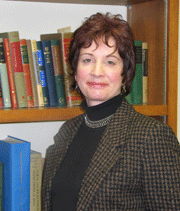 |
Paula Turpen, Ph.D. |
“These grants help enhance the infrastructure required to support nationally competitive research programs,” said UNMC Director of Research Resources Paula Turpen, Ph.D. “This funding helps to increase our prominence as a health sciences center and allows the university to further advance the frontiers of science and technology.”
Over the past 10 years, funding for research has increased at the UNMC campus, from about $27 million in 1997 to $80 million last year.
“The NU Foundation awards are especially important during periods when the budget of the National Institutes of Health is static or declining, such as we are now experiencing,” Dr. Turpen said. “We are proud of our accomplishment in attracting research funding, but since research growth is dependent on providing investigators access to quality equipment in the medical center’s research core facilities, these awards become even more valuable.”
Below are the items funded.
Automated Tissue Microarray System ($200,000) — Prostate cancer is the most frequently diagnosed malignancy in North American men, the second leading cause of cancer death in men and a major health issue in the western world. A tissue microarray, currently not available at UNMC, will be used to study the connection between inflammation and prostate cancer. A strong connection between local inflammation and cancer risk has been shown for other types of cancer, but there is little information with respect to this specific malignancy. Prostate cancer is currently under investigation by eight researchers at UNMC, who together receive $6.1 million in annual funding from the National Institutes of Health.
“Microarrays are used to evaluate changes in gene expression of cells and tissues,” Dr. Turpen said. “The microarray technology will be useful to many campus investigators who study cancer and other disease processes where information about changes in gene expression provides clues for the development of new therapies.”
Ultramicrotome ($55,445) — Extremely thin slices of tissue are needed before they can be evaluated using a high-power electron microscope, a tool that magnifies images up to 60,000 times by passing an electron beam through a very thin slice of tissue. These thin slices can only be made with a tool called a microtome, which uses diamond knives to cut precisely.
A new ultramicrotome will replace a 20-year-old device in the Core Electron Microscopy Facility, which currently supports 15 investigators who receive annual funding of $11.8 million and conduct research programs in cancer, diabetes, nanomedicine, respiratory disease, genetics, neuroscience, infectious diseases and bioterrorism.
Researchers at the University of Nebraska-Lincoln, Boys Town National Research Hospital and Creighton University also use the Electron Microscopy Facility.